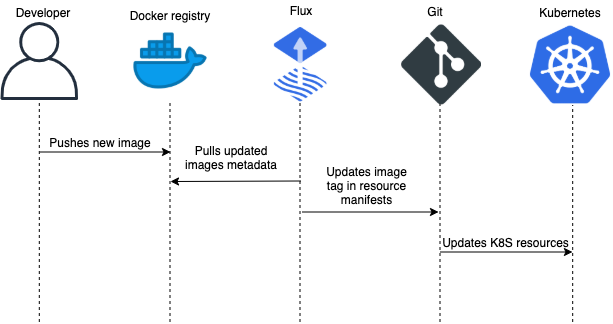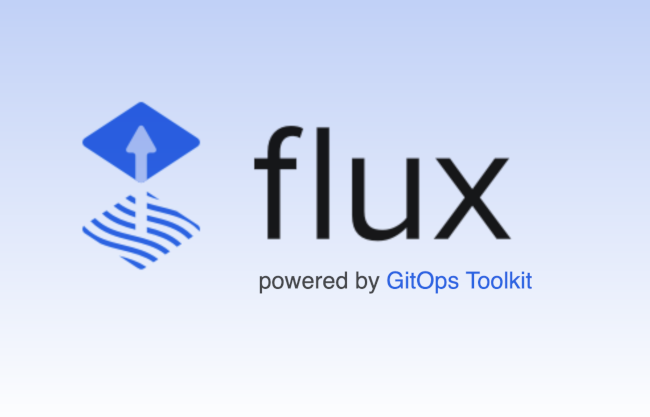Key Takeaways
Pods in Kubernetes can be evicted due to resource constraints, node pressure, or user actions.
Manual management of pod eviction is complex and time-consuming, often leading to inconsistent resource allocation.
Flux is a powerful tool that automates the synchronization of Kubernetes manifests with your cluster.
By using Flux, you can proactively manage resource requests, limits, and monitor pod usage to prevent evictions.
Automating pod eviction management with Flux improves efficiency, consistency, and scalability in Kubernetes environments.
How to Automate Solutions for Pod Eviction Issues in Kubernetes with Flux
Kubernetes is a fantastic tool for managing containerized applications, but one of the challenges you might face is pod eviction. Understanding why pods get evicted and how to automate solutions for these issues can save you a lot of time and headaches.
Understanding Pod Eviction Issues
Before diving into automation, it’s crucial to understand what causes pod eviction in Kubernetes. Pods can be evicted for several reasons, and knowing these can help you prevent them.

“flux in kubernetes” from livebook.manning.com and used with no modifications.
Why Pods Get Evicted in Kubernetes
Resource Constraints
One of the most common reasons for pod eviction is resource constraints. When a node runs out of CPU or memory, Kubernetes may evict lower-priority pods to free up resources for more critical workloads.
Node Pressure Evictions
Node pressure evictions occur when a node experiences high pressure on its resources. This can include disk pressure, memory pressure, or even PID pressure. Kubernetes uses eviction signals to determine when to evict pods to maintain node stability.
Node pressure evictions ensure that critical system functions remain operational by evicting non-essential pods.
User-Initiated Evictions
Sometimes, users may manually evict pods through the Kubernetes API. This can be done for various reasons, such as maintenance or to rebalance workloads across nodes.
Challenges of Manual Pod Eviction Management
Managing pod evictions manually can be a daunting task. Let’s explore some of the challenges you might face, such as the need for effective Kubernetes monitoring and troubleshooting.
Complexity and Scalability Issues
As your Kubernetes cluster grows, managing pod evictions manually becomes increasingly complex. You need to keep track of resource usage, set appropriate limits, and ensure that critical applications are not affected. For more insights, check out this guide on solving common Kubernetes issues.
Inconsistent Resource Allocation
Manual management often leads to inconsistent resource allocation. Without automated policies, you might find that some nodes are underutilized while others are overburdened, leading to inefficient use of resources.
Time-Consuming Troubleshooting
When a pod is evicted, troubleshooting the root cause can be time-consuming. You need to check logs, analyze resource usage, and adjust configurations to prevent future evictions. For more detailed insights, you can refer to Kubernetes monitoring and troubleshooting techniques.
Introducing Flux
To address these challenges, we can use Flux, a tool that automates the synchronization of Kubernetes manifests with your cluster. Flux helps you manage resources more efficiently and ensures that your cluster is always in the desired state.
What is Flux?
Flux is a continuous delivery tool for Kubernetes that automates the deployment of your applications. It watches your version control system for changes and applies those changes to your cluster, ensuring that your cluster state matches your desired configuration.
Automates the synchronization of Kubernetes manifests
Ensures that your cluster is always in the desired state
Helps manage resources more efficiently
Key Features of Flux
Flux comes with a variety of features that make it indispensable for managing Kubernetes clusters efficiently. Here are some of its key features:
GitOps Automation: Flux continuously synchronizes your cluster state with the manifests stored in your Git repository.
Declarative Configuration: By using declarative configuration, you can define your desired state in code, making it easier to manage and reproduce.
Policy Enforcement: Flux can enforce policies to ensure that your cluster remains in the desired state, even in the face of manual changes.
Real-time Monitoring: Flux monitors your cluster in real-time, making it easier to detect and respond to issues quickly.
How Flux Integrates with Kubernetes
Flux integrates seamlessly with Kubernetes by using the Kubernetes API to apply changes to your cluster. It watches for changes in your Git repository and updates your cluster accordingly. This integration ensures that your cluster is always in sync with your desired configuration.
Additionally, Flux uses Kubernetes Custom Resource Definitions (CRDs) to manage its own state and configuration. This allows you to manage Flux itself using the same declarative approach you use for your applications.
Setting Up Flux for Pod Eviction Management
Setting up Flux to manage pod eviction issues in Kubernetes involves a few steps. Let’s walk through the process.
Prerequisites for Deployment
Before you can deploy Flux, you’ll need to meet a few prerequisites:
A running Kubernetes cluster
kubectl installed and configured to access your cluster
A Git repository to store your Kubernetes manifests
Installing Fluxctl
Fluxctl is a command-line tool that you can use to interact with Flux. To install Fluxctl, follow these steps:
Download the latest release of Fluxctl from the official GitHub repository.
Make the downloaded file executable:
chmod +x fluxctlMove the executable to a directory in your PATH:
sudo mv fluxctl /usr/local/bin/
Deploying Flux on Kubernetes
With Fluxctl installed, you can now deploy Flux on your Kubernetes cluster. Follow these steps:
For a comprehensive guide, you can refer to this Flux tutorial on implementing continuous integration into your Kubernetes cluster.
Clone the Flux Git repository:
git clone https://github.com/fluxcd/fluxNavigate to the cloned repository:
cd fluxApply the Flux manifests to your cluster:
kubectl apply -f deploy/fluxConfigure Flux to watch your Git repository by creating a
flux-secret.yamlfile with your repository details.Apply the secret to your cluster:
kubectl apply -f flux-secret.yaml
Once Flux is deployed, it will start synchronizing your cluster with the manifests in your Git repository.
Automating Solutions Using Flux
Now that Flux is set up, let’s explore how to automate solutions for pod eviction issues using Flux. For more troubleshooting tips, you can also check out solving common Kubernetes issues in Azure AKS.
Setting Resource Requests and Limits
To prevent pod evictions due to resource constraints, you can set resource requests and limits in your pod manifests. This ensures that each pod gets the resources it needs without overloading the node.
Setting appropriate resource requests and limits helps prevent resource contention and ensures that critical applications run smoothly.
Utilizing Priority Classes
Priority classes allow you to assign different levels of importance to your pods. By using priority classes, you can ensure that critical pods are less likely to be evicted during resource shortages.
Monitoring Pod Resource Usage
Flux can be configured to monitor pod resource usage in real-time. By keeping an eye on resource usage, you can identify and address potential issues before they lead to pod evictions.
Implementing Automated Policy Check-ins
Automated policy check-ins help ensure that your cluster remains in the desired state. Flux can enforce policies to prevent unauthorized changes and maintain resource allocations, reducing the risk of pod evictions.
Benefits of Using Flux for Pod Eviction
Using Flux for managing pod evictions offers several benefits:
Efficiency and Consistency
Flux automates the synchronization of your cluster state with your desired configuration, ensuring that your cluster is always in the desired state. This automation reduces the need for manual intervention and ensures consistent resource allocation.
Proactive Resource Management
By monitoring resource usage and enforcing policies, Flux helps you manage resources proactively. This reduces the risk of resource contention and ensures that critical applications have the resources they need.
Reduces the need for manual intervention
Ensures consistent resource allocation
Helps manage resources proactively
Case Study: Practical Application of Flux
To illustrate how Flux can effectively manage pod eviction issues, let’s look at a real-world example. We’ll walk through the initial setup, scaling, resource management, and the outcomes observed.
Initial Setup and Configuration
In this case study, a medium-sized tech company was facing frequent pod evictions due to resource constraints. The initial setup involved deploying Flux on their existing Kubernetes cluster. The company followed these steps:
Cloned the Flux Git repository.
Applied the Flux manifests to their Kubernetes cluster.
Configured Flux to watch their Git repository for changes.
Once Flux was up and running, it began synchronizing the cluster state with the desired configuration stored in the Git repository.
Scaling and Resource Management
With Flux in place, the company could focus on scaling and resource management. They used Flux to set resource requests and limits for their pods, ensuring that each pod received the necessary resources without overloading the nodes. Additionally, they implemented priority classes to prioritize critical applications.
Flux’s real-time monitoring capabilities allowed the company to keep an eye on resource usage and identify potential issues before they led to pod evictions. Automated policy check-ins ensured that the cluster remained in the desired state, even in the face of manual changes.
Outcomes and Observations
The results of implementing Flux were impressive:
Pod evictions due to resource constraints were significantly reduced.
Resource allocation became more consistent, with critical applications receiving the necessary resources.
Manual intervention was minimized, freeing up the team’s time for other tasks.
Overall, the company observed improved efficiency, consistency, and scalability in their Kubernetes environment.
Final Thoughts
Automating pod eviction management with Flux can significantly improve the efficiency and consistency of your Kubernetes environment. By understanding the causes of pod evictions and using Flux to manage resources proactively, you can ensure that your critical applications run smoothly.
Flux’s real-time monitoring and automated policy enforcement make it an invaluable tool for managing Kubernetes clusters. Whether you’re dealing with resource constraints, node pressure, or user-initiated evictions, Flux can help you maintain a stable and efficient environment. For a deeper understanding of monitoring in Kubernetes, check out this in-depth guide to Prometheus.
Automating pod eviction management with Flux improves efficiency and consistency.
Understanding the causes of pod evictions helps in preventing them.
Flux’s real-time monitoring and policy enforcement are invaluable for managing Kubernetes clusters.
Using Flux reduces the need for manual intervention, freeing up your team’s time.
Key Takeaways on Automating Pod Eviction
Using Flux to automate pod eviction management in Kubernetes offers several key benefits:
Reduces the risk of resource contention and ensures critical applications have the necessary resources.
Minimizes manual intervention, freeing up time for other tasks.
Ensures consistent resource allocation and improves overall efficiency.
Proactively manages resources, reducing the likelihood of pod evictions.
Future Prospects of Flux in Kubernetes Management
As Kubernetes continues to evolve, tools like Flux will play an increasingly important role in managing complex environments. The ability to automate resource management and maintain the desired state of your cluster will become even more critical as applications grow in complexity and scale.
Future developments in Flux and similar tools will likely focus on enhancing automation capabilities, improving integration with other Kubernetes tools, and providing even more robust monitoring and policy enforcement features.
Frequently Asked Questions (FAQ)
What is pod eviction in Kubernetes?
Pod eviction in Kubernetes occurs when a pod is removed from a node due to resource constraints, node pressure, or user actions.
Common reasons for pod eviction include CPU or memory shortages, disk pressure, and manual evictions by users.
How can Flux help in managing pod eviction?
Flux helps manage pod evictions by automating the synchronization of your cluster state with the desired configuration stored in your Git repository. It ensures that your cluster is always in the desired state and proactively manages resources to prevent evictions.
By using Flux, you can set resource requests and limits, implement priority classes, monitor pod resource usage, and enforce policies to maintain a stable and efficient Kubernetes environment.
Flux’s real-time monitoring and automated policy enforcement make it an invaluable tool for managing Kubernetes clusters, reducing the need for manual intervention and ensuring consistent resource allocation.




